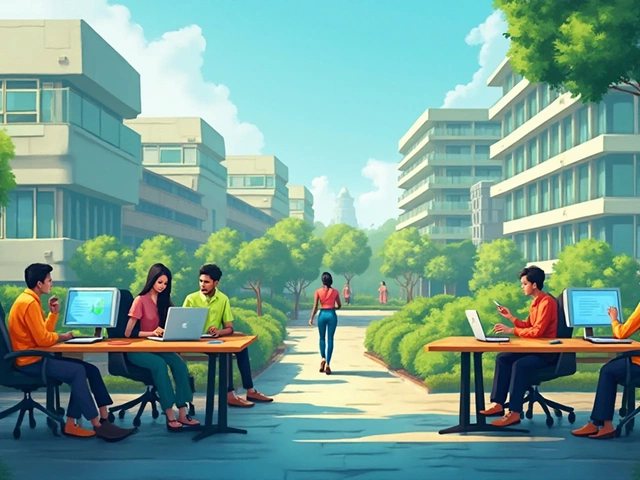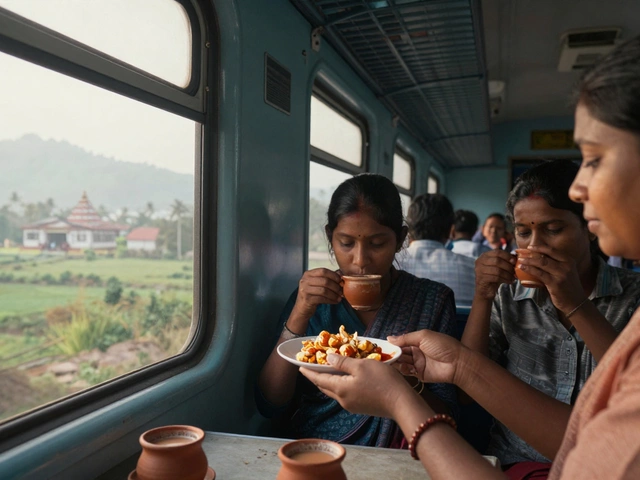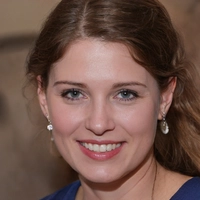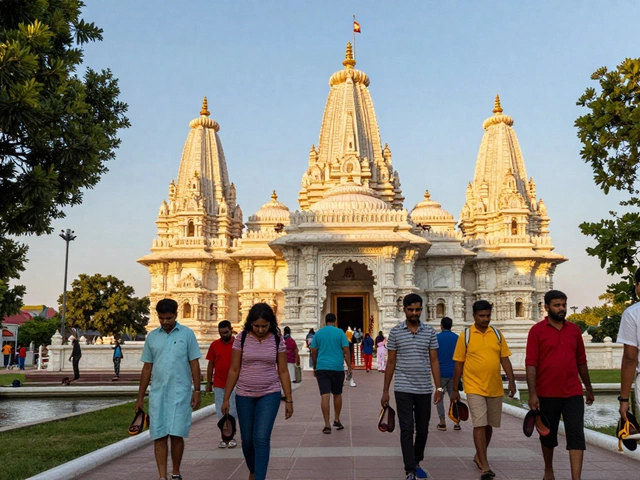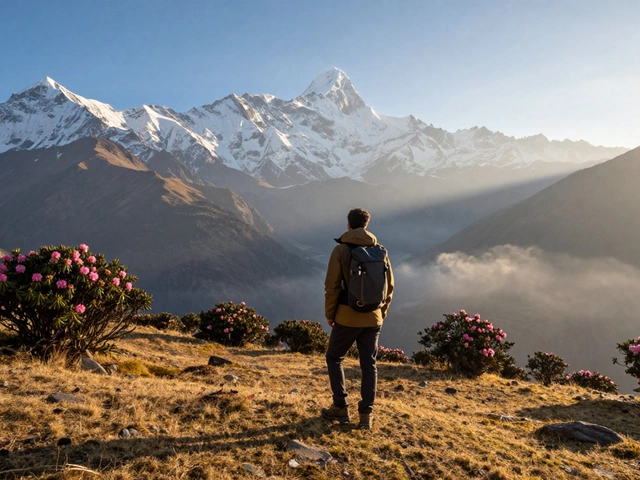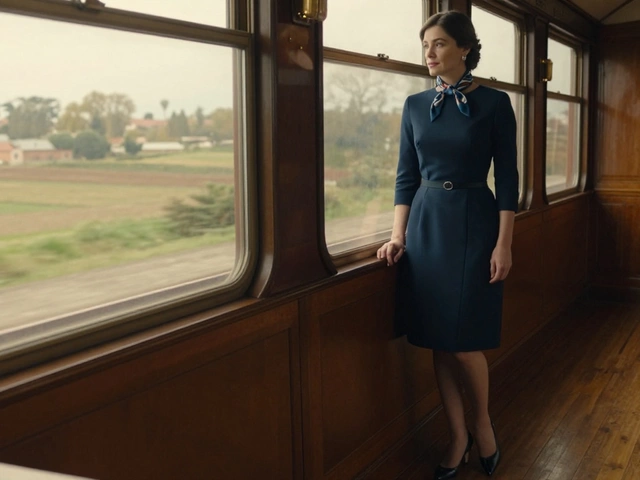Between tangled traffic jams, Bollywood billboards, marble palaces, and secret beaches—picking the more beautiful city between Delhi and Mumbai isn’t as easy as grabbing a chai on the corner. Spend a few days in either, and you’ll get why this debate pops up everywhere, from hostel lounges to dinner tables. So let’s ditch tourist clichés and get messy in the heart of two cities obsessed with being unforgettable.
Delhi: Grandeur, Chaos, and the Layers of Time
Delhi pulls you in before you even touch the ground—literally, since the view from the plane window shows a sprawl stitched with ancient domes and glowing highways. Old Delhi’s streets are both a maze and a memory; the Chandni Chowk market doesn’t care for personal space, filling the air with cardamom and diesel. If you’re after jaw-dropping history, it’s hard to beat this city. The Red Fort glimmers at sunset, Humayun’s Tomb floats above lush lawns, and the Qutub Minar’s stories twist like the staircase inside it. By the way, did you know the Qutub Minar is the world’s tallest brick minaret, dating back to 1192? You could walk an entire afternoon just snapping domes and maybe get lost in the sublime Lotus Temple, shaped like blooming petals against Delhi’s forever-fuzzy sky.
But Delhi isn’t about standing still in the past. It’s alive with contrast. You can wander Khan Market’s bookshops for rare finds and then end up in a noisy night bazaar. Every local has an opinion about the best chaat stand—most roads seem to lead back to food. Actually, Delhi gives Mumbai a real run for its money when it comes to street food. Try the golgappa challenge, find your favorite kathi roll on Janpath Lane, or wake up for piping hot parathas at Paranthe Wali Gali (yes, you’ll line up in the morning, and it’ll be worth every minute).
Architecture buffs swoon over Lutyens’ Delhi. Broad, green avenues, and grand colonial buildings (like the India Gate, inspired by Paris’ Arc de Triomphe) give the city a stately vibe. If you’re into museums, Delhi delivers rich options—the National Museum’s Buddhist relics and Mughal artifacts don’t fit into a day’s visit. Ride the Metro, chat with university students in Connaught Place, and catch a play at the Habitat Centre—it’s a young, artistic energy hidden beneath formal facades and government politics.
Monsoons bring unpredictable drama, and spring dusts the city in color with Holi celebrations that actually surprise with calm before the wild storms of color powder. There’s a beat to Delhi’s seasons, like winter’s morning fog that swallows roads whole, making monuments look like ghosts looming out of the mist.
Delhi can sometimes feel overwhelming, especially if you’re not a fan of tight crowds and spontaneous street processions that snarl up the traffic. But you never doubt that you’re somewhere that shaped the world. Want the numbers? Delhi’s population is nearly 33 million as of last year—impossible to ignore. Yet, hidden gardens like Lodhi, peacocks in the parks, and rooftop cafes let you catch your breath. Some visitors even plan their mornings around feeding the local parakeets, a surprisingly charming city ritual.
Tip: If you visit in January, stick around for Republic Day (January 26th). The military parade is something you won’t forget, and the city’s pride is on full display. Just, uh, book hotels early—trust me, I got caught once couch-surfing with a rather grumpy auntie. Keep a scarf handy for the pollution spikes; everyone does. Most hotels now offer air purifiers. For families, Delhi’s multiple green belts (try Nehru Park or Deer Park) are perfect for picnics with local sweets from Bengali Market.
Here’s a little comparison table that sums up some key info about Delhi and Mumbai, just for quick reference:
| City | Population (2024) | Main Attractions | Best Street Food | Unique Experience |
|---|---|---|---|---|
| Delhi | 32.9 million | Red Fort, Humayun’s Tomb, Qutub Minar, Lotus Temple | Chaat, Parathas, Golgappa | Walking Old Delhi at dawn, Holi festival bursts |
| Mumbai | 21.3 million | Gateway of India, Marine Drive, Elephanta Caves | Vada Pav, Pav Bhaji, Bhel Puri | Chilling on Chowpatty Beach through sunset |
Back to Delhi, don’t miss the poetry of contrast—dingy, dazzling, always a surprise waiting for you behind every rickshaw. Some say you never actually see all of Delhi; you just grow your own piece of it.
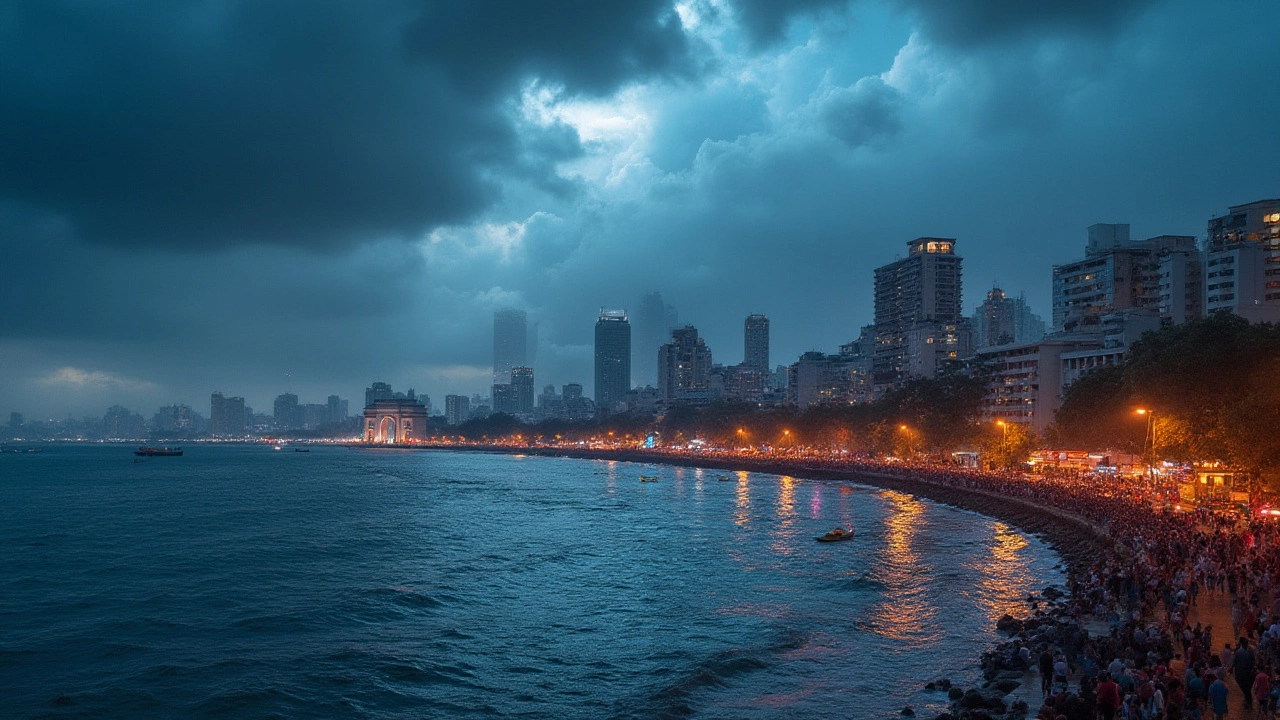
Mumbai: Coastal Glam, Cinematic Dreams, and Quiet Corners
Mumbai wakes up with crash of waves and honk of black-and-yellow taxis, not just train horns or temple bells. The city is tightly pressed against the coast, which gives everything a salty spin and the sense that even concrete towers are racing the tides. If Delhi struts with old-world confidence, Mumbai practically sprints—or more likely, dances, sways, whirls on the promise of something shiny.
This city is the poster child for dreams—nearly everyone you meet is working some hustle, not just in Bollywood but in everything from dabbawalas (those lunchbox superheroes that famously deliver 200,000 meals daily, almost never getting an address wrong) to innovative start-ups setting up shop inside historic mills-turned-loft-offices. Mumbai is India's richest city, but it wears its wealth in high-waisted jeans and flip-flops; don’t be surprised if a tech tycoon sits beside you on the local train.
The beauty of Mumbai is all about the pageantry of everyday life. Morning joggers at Marine Drive bend their heads against the freshest breeze in the city before the traffic takes over. Kids snack on roasted corn after school on Juhu Beach, Bollywood hopefuls snap selfies at Bandra’s graffiti walls, and friends gather on Chowpatty Beach long after other cities would have rolled up their sidewalks.
Architecture buffs, brace yourselves—Gothic stonework at Chhatrapati Shivaji Maharaj Terminus, art deco along Marine Drive, crumbling Parsi mansions near Ballard Estate: Mumbai pulls together an unexpected collection of styles that somehow, against odds, work. Mumbai’s UNESCO-listed Victorian and Art Deco Ensemble has got nearly 600 buildings united as a heritage site. Gaze at the Gateway of India and picture King George V’s grand landing in 1911—if he saw the photo-snapping crowds now, he’d have fainted.
One of Mumbai’s most date-worthy moves? Ferry-tripping to Elephanta Island—strange, ancient caves with mysterious Shiva carvings and a short monkey chase or two (those monkeys know what they want, usually your snacks). If street food is your love language, vada pav (deep-fried potato slider) and pav bhaji (spicy vegetable mash) are Mumbai’s answer to Delhi’s snacks. Find your spice comfort zone, or challenge a local to a pani puri face-off at any waterfront stall. Foodies, don’t skip Mohammad Ali Road at Ramadan or the 1 a.m. seafood run at Gajalee—Mumbai’s culinary scene is relentless.
But here’s Mumbai’s secret: tucked inside all that speed and surface glamour are quiet pockets of calm. The Hanging Gardens, Sanjay Gandhi National Park, and hidden heritage walks through Bandra give you a breather when the city threatens to overwhelm. Visit the Sassoon Docks before dawn, and you’ll witness a dance between fishermen and birds that doesn’t care about the skyline. The truth is, Mumbai’s sunsets—those magenta-orange-purple watercolors—are hard to beat, whether you’re on a swanky rooftop or just perched on a rock at Versova.
Mumbai’s monsoon isn’t gentle. It’s a months-long party of rain that turns roads into streams and makes the entire city smell like wet earth and ambition. The best way to survive it? Just laugh and keep walking, umbrella or no umbrella. There’s always chai (and cheap, delicious pakoras) under awnings along every block.
Lonely Planet, in its 2025 summer edition, marked Mumbai as "the city that never takes a break because it’s chasing dreams.” They’re not wrong, but they missed mentioning the city’s community spirit. From Ganesh Chaturthi (elephants, dancing, impossible crowds) to Dahi Handi (kids literally form human pyramids to grab prizes), Mumbai loves to pull everyone together.
One thing visitors often miss is Mumbai’s art and culture scene. Go beyond Bollywood and try Kala Ghoda festival—10 crazy days when one little district explodes with public art, film screenings, pop-up music, and, yes, chai stands everywhere. Or sneak into a Colaba gallery opening—no invitation required, just show up with curiosity.
For a wildlife fix, hop the suburban train to Borivali for a day hike in the Sanjay Gandhi National Park. Leopards, ancient Buddhist caves, butterflies in the humid air—who knew India’s busiest city had such a huge green lung? And if you end up in the posh SoBo (South Bombay), get yourself some cutting chai with a local, and learn everyone’s hot take about Delhi food vs. Mumbai food. Trust me, it gets heated, fast.
If you’re heading to Mumbai, pack light and leave the map at home—there’s more beauty on the side streets than any travel brochure can claim.
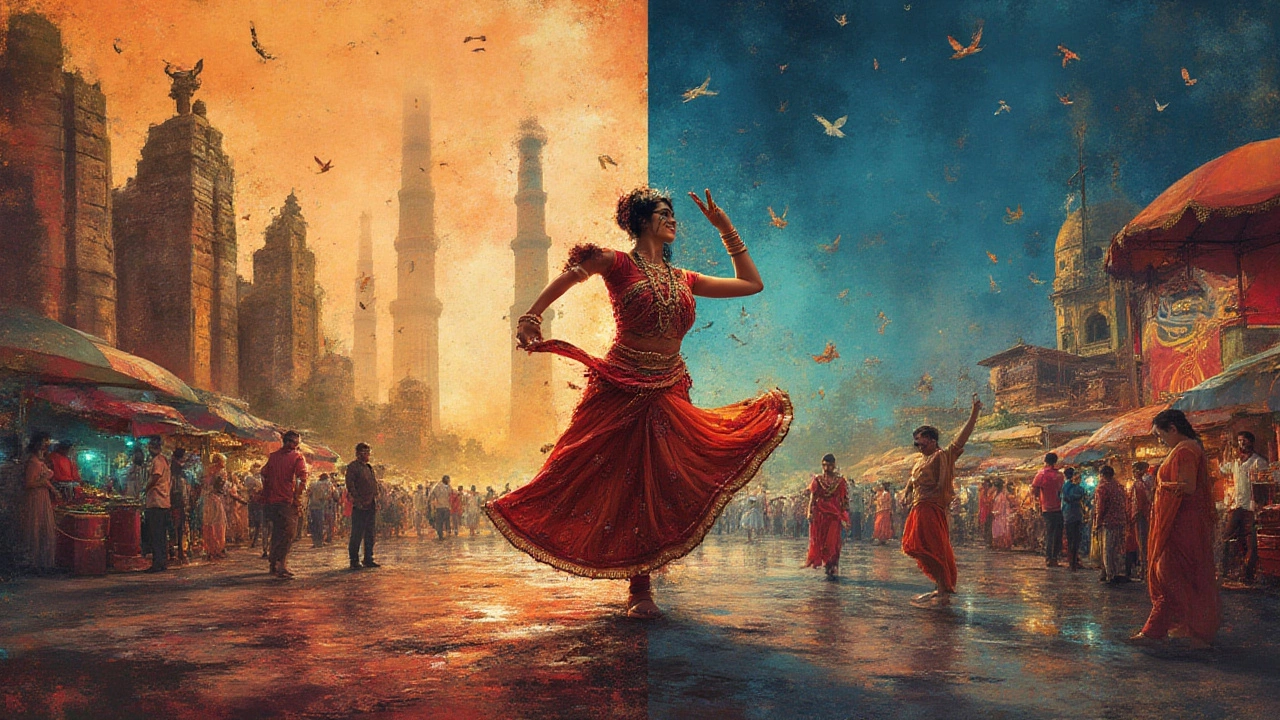
Which City Wins? Beauty Through the Eyes of the Beholder
So, which is more beautiful: Delhi or Mumbai? Here’s where it gets personal. Beauty isn’t just about scenery or grand buildings—it’s about the way a city gets under your skin, the memories you make, and the people you share them with. I still remember the first time David and I tried to cross a six-lane road in Delhi—hand-in-hand, wild-eyed, laughing in the madness. But I also can’t forget sunset ice creams by the Gateway of India, feeling like Bollywood stars for those five minutes of golden light.
Delhi delivers centuries of grandeur—you’re literally steps away from an emperor’s tomb or wandering a spice market that’s been going for generations. If you’re into history, huge festivals, winter magic and food that tingles with every bite, Delhi feels like a vibrant museum where you can touch the art. The light in winter, especially around the Yamuna River, softens everything and makes the city’s architectural sprawl positively majestic.
Mumbai, on the other hand, is energy and edge—ocean breezes, midnight street food, and rooftop laughs. It’s crowded, yes, but there’s something freeing about not needing to plan. If you want to chase nightlife, mingle with dreamers, find quirky bars hidden on old lanes, and taste every side of India’s modern face, Mumbai wins hearts fast. The humidity messes with your hair, but you forgive it every time rain meets neon and city pulses back to life.
Let’s talk about logistics. Mumbai is more forgiving for first-timers. The local train can be wild, but English is widely used and there’s always a fellow traveler nearby to help with directions—or at the very least, tackle vada pav together. Delhi, by contrast, can be tougher on the senses but rewards patience in spades, especially if you push beyond the tourist corridor. Safety-wise, both cities are cautious but manageable with a dash of common sense (and grabbing the official app-based cabs both places helps).
Here’s a checklist for travelers debating which city fits better:
- If you love architecture, ancient history, and food with stories—Delhi is your place.
- If ocean air, modern chaos, and a dose of showbiz are more your thing, Mumbai’s your soulmate.
- Festival chasers: Holi and Diwali hit different in Delhi. Ganesh Chaturthi, Kala Ghoda, and Mumbai’s New Year’s Eve street parties are a rush like nowhere else.
- Both places deliver on street eats, but ask locals where they go—skip guidebook classics and try hidden gems. Watch for queues: locals rarely wait for mediocre food.
- If you get overwhelmed easily, try a few quieter corners. In Delhi, Lodhi Gardens or Mehrauli Archaeological Park; in Mumbai, Bandra’s village lanes or Banganga Tank early morning.
- If you want to splurge, both cities have iconic luxury hotels with storied histories. The Imperial in Delhi and the Taj Mahal Palace in Mumbai offer a slice of old-world charm (and killer breakfast buffets).
Beauty, for me, sits somewhere between chaos and comfort. Delhi stuns you, makes you think. Mumbai welcomes you, makes you dream. The best tip anyone ever gave me? “Don’t pick one—let both cities surprise you.” And maybe, like me, you’ll leave a piece of your heart in each.

